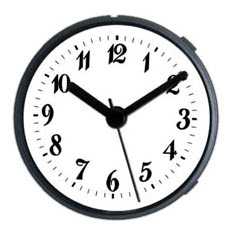
Clockmaking with Specific Clock Hands and also Dials
Clock hands and dials offer the most distinct visual effect of a wrist watch. Clock dials as well as hands work as a team in bringing out design and tone, and also they aid the viewer to get the moment promptly so long as they are contrasting as well as well matched. In this short article we discover exactly how to attain a well-matched and also different set, and also exactly how to ideal portray your preferred look.
Clock hands and also dials are truly the focus of attention, as well as it is not shocking that clockmakers dedicate their initiatives to combine them strikingly. This is not to downplay the role of the clock activity in properly positioning the turn over the face continually. However the movement is pure feature as well as continues to be hidden; design (kind) must be highlighted through the visual parts.
Building clocks from square one involves picking your own components, and also you ought to pursue a merged, harmonious appearance. The hands as well as dial are the natural focus, but the general functionality of the timepiece needs to be figured out initially. Consisting of particular functions or uniqueness might have an impact on one or both of these component parts.
There is a great variety of clock activities available, each with a certain combination of attributes. The essential function is timekeeping, suggesting showing the current time constantly to whatever extent wanted. That is, though the most usual cycle is twelve hours (when whatever go back to its starting state), some movements prolong the cycle to something much longer, possibly needing a various looking dial and also maybe entailing an added hand.
For instance, you can get a 24-hour motion, cycling once daily instead of twice. The matching dial will reveal an added lots numbers, either doubling up with the very first lots or spread out over the circumference; the last style is inaccessible with the exception of big clocks. One activity revolves the hr hand two times a day, the various other once daily.
Longer cycles are the week and the month. These activities call for adjusted dials that reveal the days of the week or days in the month, respectively. An added hand points to the equivalent day or date.
Still other motions offer tracking tide level (for those in seaside setups) or reporting weather sensations such as temperature level and also moisture. The dials and also hands for these are specially developed to collaborate with them, and might be similar to the round layout or might include a single hand going back and forth over a minimal array.
When your clock movement is chosen, you can transform your focus to the hands and also dials, focusing on dimensions and styles. Dial as well as hand sizes should match, obviously, as well as their designs must be complementary. Using consist of a series of shapes as well as shades, and dial lettering comes in Arabic or Roman (or signs).
Dial size dimensions range from a couple of inches to probably six feet (with massive clocks placed directly on a wall instead of trying to find big adequate cases). When you go above about 14 inches, the minute hand ends up being as well hefty for a normal activity to revolve. In such instances order a "high-torque" variation of the exact same motor you have actually selected, and also it should carry out properly.
Offer some thought to whether you desire your clock to have a pre-owned, and also if so, whether you want the average tick-and-stop (audible) action or a constant, silent sweep activity. The electric motor ought to sustain one action or the other, and also you can make a decision merely not to place the second hand if it seems additional.
When you master the fundamentals of structure timepieces from components, you may wish to explore other facets such as sounding chimes or duplicating older clocks with oscillating pendulums. Yet basic clockmaking starts with specific clock hands as well as dials.